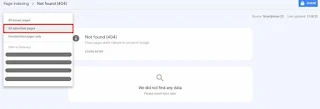Module 48: Customizing 404 Pages with HTML
Introduction
A 404 error page appears when users try to access a page that doesn’t exist on a website. A well-designed custom 404 page improves user experience, keeps visitors engaged, and can provide helpful navigation back to the main site.
This module covers how to create and customize a 404 error page using HTML, CSS, and JavaScript. You’ll learn best practices, interactive elements, and creative design strategies.
Section 1: Understanding 404 Errors
1.1 What is a 404 Page?
A 404 error is an HTTP status code indicating that the requested page is not found.
Common reasons for a 404 error:
Deleted or moved pages without redirection
Typo in the URL
Broken links
1.2 Importance of a Custom 404 Page
Enhances user experience
Reduces bounce rates
Improves SEO (search engines track 404 errors)
Maintains brand identity
Section 2: Setting Up a Basic 404 Page with HTML
2.1 Creating a Simple 404 Page
Example Code:
<!DOCTYPE html>
<html lang="en">
<head>
<meta charset="UTF-8">
<meta name="viewport" content="width=device-width, initial-scale=1.0">
<title>404 - Page Not Found</title>
<style>
body {
font-family: Arial, sans-serif;
text-align: center;
padding: 50px;
background-color: #f4f4f4;
}
h1 {
font-size: 50px;
color: #333;
}
p {
font-size: 20px;
color: #666;
}
a {
text-decoration: none;
color: #007bff;
font-size: 18px;
}
a:hover {
text-decoration: underline;
}
</style>
</head>
<body>
<h1>404</h1>
<p>Oops! The page you are looking for cannot be found.</p>
<a href="/">Go to Homepage</a>
</body>
</html>
2.2 Explanation of the Code:
h1 & p elements display the error message.
CSS styles create a clean, centered layout.
A link (<a>) helps users navigate back to the homepage.
Section 3: Enhancing the 404 Page with CSS
3.1 Adding a Background Image & Styling
A visually appealing 404 page can make a difference. Use a custom background image and improved typography.
Updated Code:
<style>
body {
background: url('404-background.jpg') no-repeat center center fixed;
background-size: cover;
color: white;
font-family: 'Arial', sans-serif;
text-align: center;
padding-top: 150px;
}
</style>
3.2 Using CSS Animations for Effect
Animations can make your 404 page feel interactive.
Example:
@keyframes fadeIn {
from { opacity: 0; }
to { opacity: 1; }
}
h1 {
animation: fadeIn 2s ease-in-out;
}
Section 4: Adding Interactive Elements with JavaScript
4.1 Search Bar on 404 Page
Users might want to search for something else instead of leaving the site.
Example Code:
<input type="text" id="searchBox" placeholder="Search our site...">
<button onclick="searchSite()">Search</button>
<script>
function searchSite() {
let query = document.getElementById('searchBox').value;
if (query) {
window.location.href = '/search?q=' + encodeURIComponent(query);
}
}
</script>
Section 5: Advanced 404 Page Features
5.1 Dynamic Redirects
Automatically redirect users to a related page based on similar URLs.
Example using JavaScript:
<script>
let requestedURL = window.location.pathname;
if (requestedURL.includes("blog")) {
window.location.href = "/blog";
}
</script>
5.2 Embedding a Funny GIF or Meme
Adding humor can make the 404 error less frustrating.
Example:
<img src="funny-404.gif" alt="Funny 404 image">
Section 6: Deploying & Testing Your 404 Page
6.1 Setting Up the 404 Page on a Server
For Apache Server (.htaccess method)
Open the .htaccess file in your website’s root directory.
Add the following line:
ErrorDocument 404 /404.html
Upload 404.html to the root folder.
For Nginx Server
Open the Nginx configuration file.
Add:
error_page 404 /404.html;
Restart Nginx:
sudo service nginx restart
6.2 Testing the 404 Page
Manually test by typing an incorrect URL in the browser.
Check console logs for errors in JavaScript.
Use Google Search Console to analyze 404 errors.
Section 7: Exercises & Challenges
Exercise 1: Basic Custom 404 Page
Modify the provided HTML & CSS to match your brand’s theme.
Exercise 2: Adding a Search Feature
Implement a working search box on the 404 page.
Exercise 3: Implement a Dynamic Redirect
Redirect users based on URL keywords using JavaScript.
Challenge Task: Gamify the 404 Page
Add a mini-game (like a jumping dinosaur game) to engage users before they leave.
Conclusion
A customized 404 page keeps users engaged, enhances branding, and improves navigation. By combining HTML, CSS, and JavaScript, you can create an interactive and helpful 404 page that adds value to your website.









No comments:
Post a Comment